Recently, we took another short drive up to Suncheon, the city just north of us. We love taking day trips there as we are constantly discovering new things to see and do. This time, the game plan was to go to the Naganeupseong Folk Village just west of the city.
The folk village is surrounded by a fortress that was first built in 1397 and there are still around 100 families that live there. The majority of the residents are, in some way, linked to the tourism of Naganeeupseong and host various attractions at their houses from pottery making to portraits in traditional Korean garb.
Getting there took us down a winding highway through the mountains and the views were stunning. Sounds of drums greeted us when we arrived and we hurried off in the direction of that alluring sound. Just outside the fortress walls we found a troop of dancers playing instruments and performing a dance in a large park. Wearing the performer regalia from the Joseon Dynasty, their presence, performance, and joyful smiles were a welcome sight as we entered the historical village.
Being late Autumn, the leaves were just starting to change. With such beautiful scenery, we walked through the village and along the fortress walls for quite some time. The village is comprised of two types of hanok houses. Giwajip (houses with tiled roofs) occupied by the nobility and chogajip (houses with straw-thatched roofs) inhabited by the peasantry. As we passed by one chogajip, the smell of pajeon filled the air.
Pajeon is something you don’t pass up. Ever. This Korean pancake dish is made from green onions and pan fried. It is simplistic and oh so good. Typically served wherever there are hikers, it is the perfect post-hike snack. Other ingredients, depending on the variety of pajeon, include seafood, meat, and vegetables. Many people eat pajeon as a type of anju, food you eat whilst drinking. The best drink to go with your pajeon is of course, makgeolli. Makgeolli is a type of rice wine that has a milky white color and is typically about 6-8% alcohol.
The pajeon being served was haemul pajeon, which simply means a seafood version of this pancake. Typically, it is not our favorite, but this time it was to die for. The makgeolli was actually dongdongju, which has a higher alcohol content. Though we tried to eat slowly for maximum enjoyment, it was soon devoured.
-Stephanie

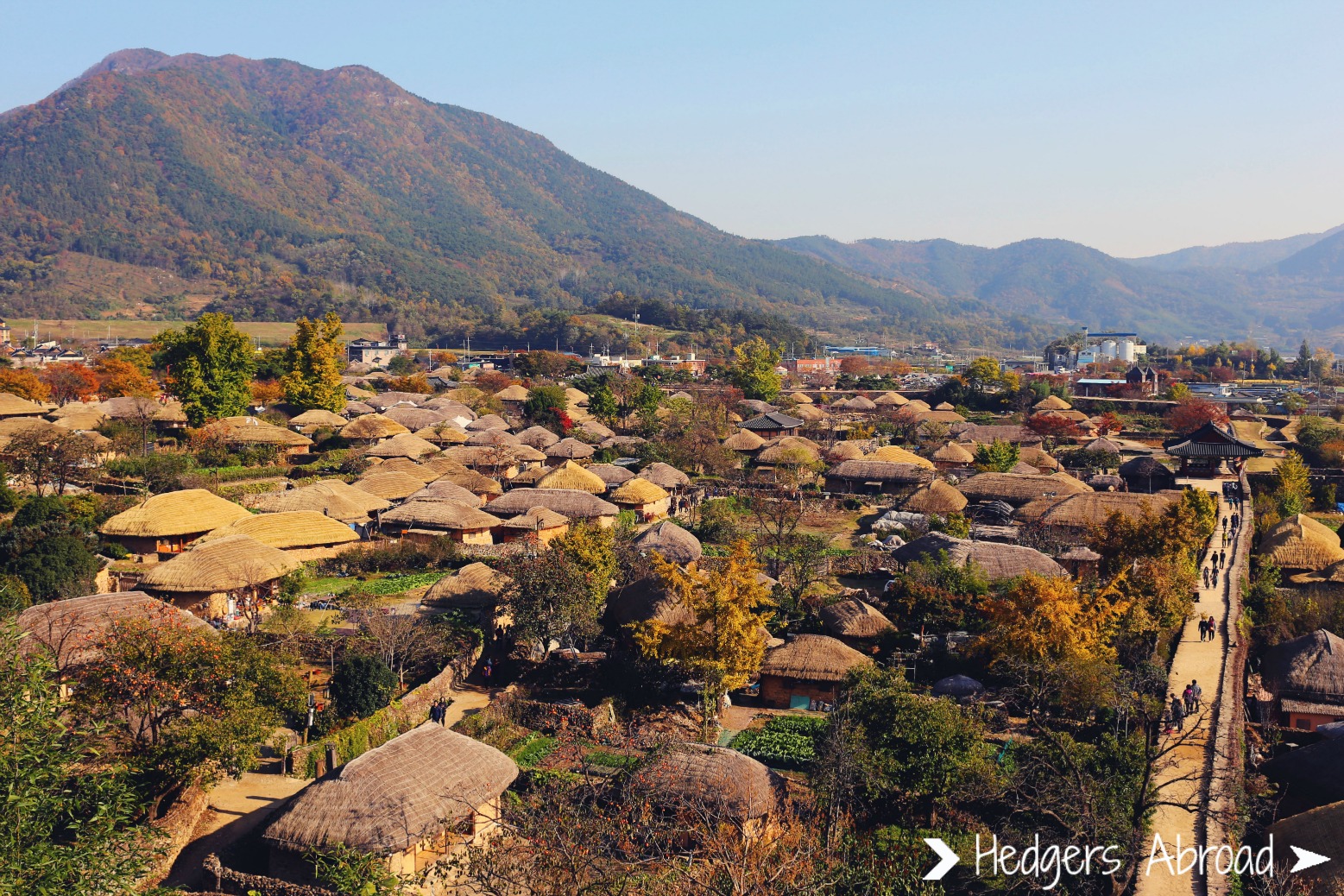
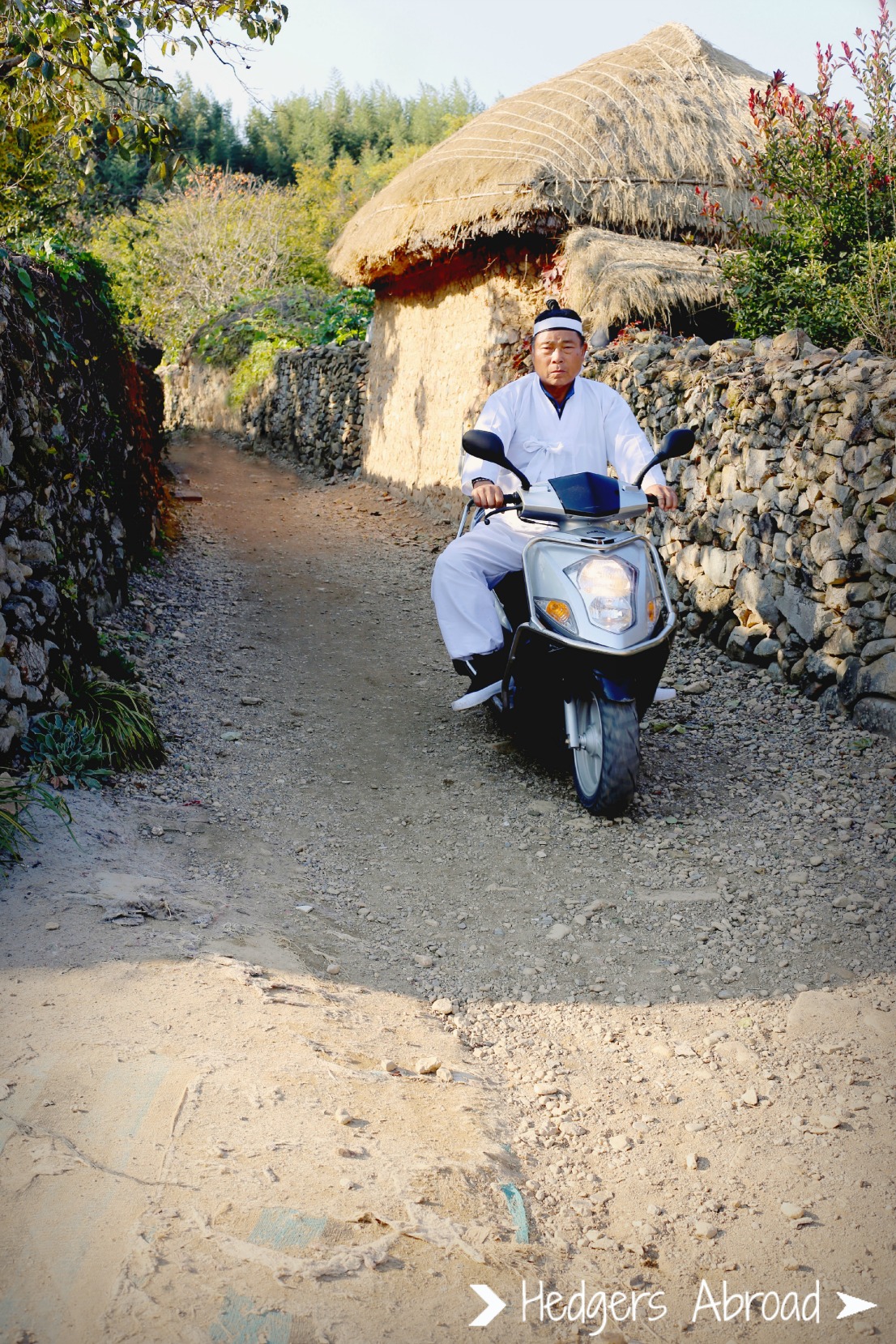
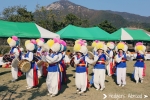




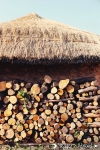

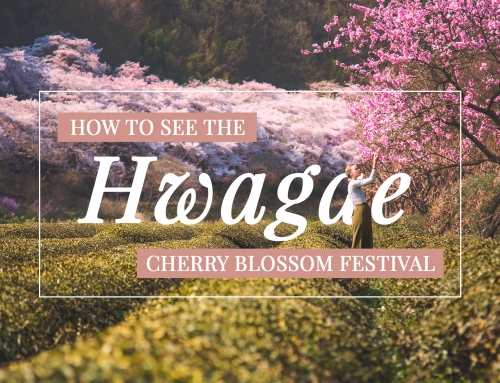

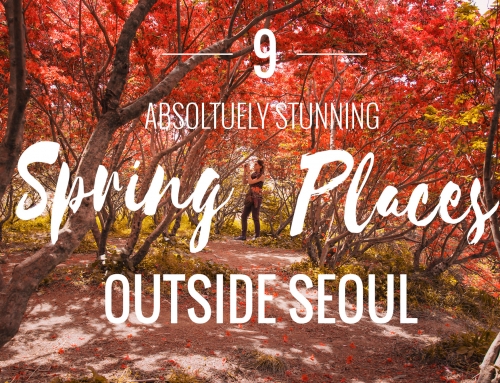
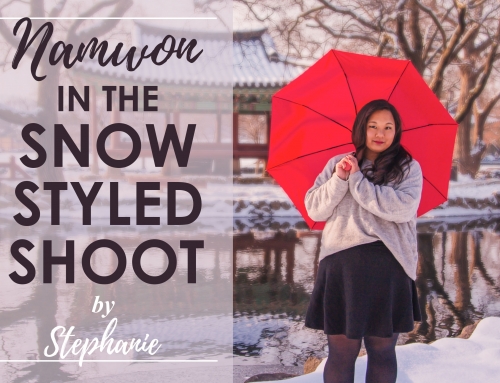
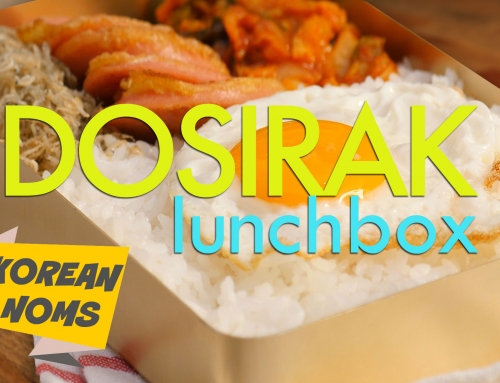

Beautiful trees there. Such vivid colors. Ours were very pretty until this cold snap has really taken it toll on them.
Miss you guys and Love always honey
The wind is what is killing all our leaves. I watched a beautiful Ginco tree outside my classroom go bald over just a couple of hours because of the ridiculous winds. It had just changed color, too.
Love this Naganeupseong post of yours. I miss that place; I was there in 2008 and wandered around those huts, too. I was impressed that they have actual residents in this village in this very modern Korea. If I;m not mistaken, there’s a ‘homestay’ hanok in there.Thanks for sharing!
There is one Hanok house where you can do a traditional homestay! We were impressed by how much there was to see there as all the residents pitched in to provide an awesome cultural experience. Everyone was dressed in traditional garb and made their living hosting the tourists.
I enjoyed reliving this place through your post. The colors on those leaves were to die for that day. Great smells of wood stoves and traditional food all around. Such a great experience to be found at Nagan.
It was so funny to find out you guys went on the same day! We should really coordinate better and make plans to go adventuring together sometime soon!
Yum! Love pajeon and makgeolli! Beautiful pictures, I particularly like the guy in traditional garb on a motorbike! Looked to be a sweet day! This town is far from me, I do want to check out other traditional folk villages nearby be in Seoul!
There are a couple in Seoul or nearby. Namsangol is located at the base of Namsan Tower. There is also “Korean Folk Village” in Yongin. They are a lot of fun and I would really recommend hoping on a cross country bus for a couple of hours and leaving the city to see some of the truly rural ones. Our favorite so far was the Hahoe Folk Village in Andong! We stayed in a traditional homestay Hanok house for the weekend last winter and it was so fun!
I totally agree with you guys, I love the communal eating style here. I usually have a smaller appetite than most so it’s better for me to not waste food. And when we go to a hof it means I get to try a lot more items on the menu! Also, you can never go wrong with pajeon and makgeoli!
I absolutely LOVE pajeon, and don’t eat it nearly enough! Thanks for giving me a craving 🙂 haha.
Your photos are great, and I’m sad that the trees aren’t looking like that anymore, now winter had arrived (in Wonju anyway!)
Lovely photos, I like older Korean villages like that! I also love pajeon and wish it wasn’t just associated with drinking or hiking because it’s so good! I ate a really nice one outside the bamboo forest in Damyang and they put green shoots into it resembling the bamboo forest.
We went here last year and had the chance to stay in one of the traditional houses!! It was so cool waking up there, feeling like you’re in another time and world, haha.
I definitely don’t eat pajeon enough, but always tend to think about it when it’s raining. I’m really assimilating 😛
One of our favorite experiences so far has been staying in a traditional Hanok house in Andong last winter. It’s the perfect weekend getaway from the city!
[…] areas worth checking out are the Naganeupseong Folk Village, Seonamsa Temple, and Songgwangsa Temple. Or you could easily just spend your time enjoying the […]
[…] at the only stores and restaurants on the island where you should end your excursion with some pajeon and makgeolli. Camping is also available for free just down the road from the houses, and provided one of our […]
[…] Damyang River, itself, has a beautiful park and many restaurants where you can get pajeon and makgeolli surrounded by the sounds of a gently flowing riwhile shaded by rustling […]
[…] however, the dishes continue like 8-10 minute clockwork, escalating into full crab entrees, pajeon, soups, marinated rib mean (galbi), and dozens the makgeolli has erased from my […]